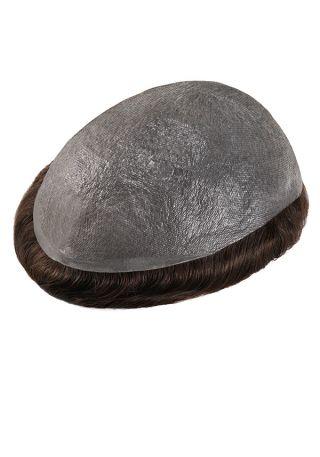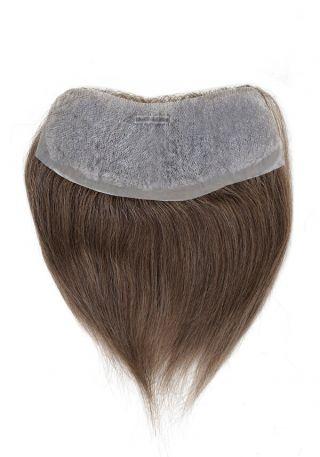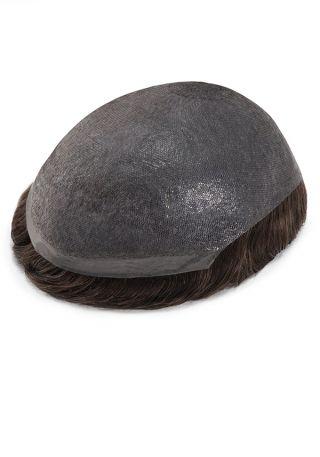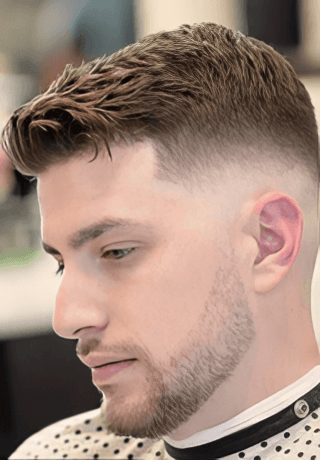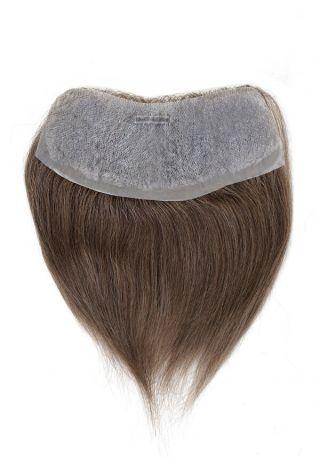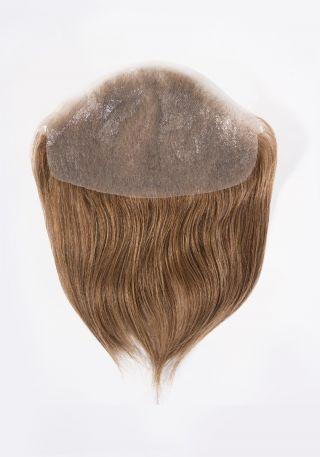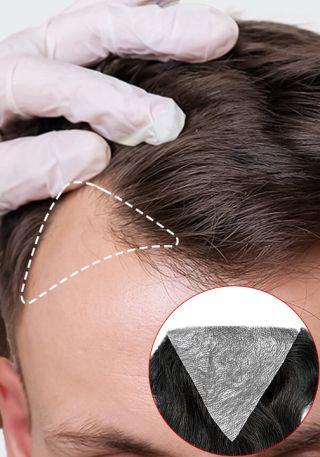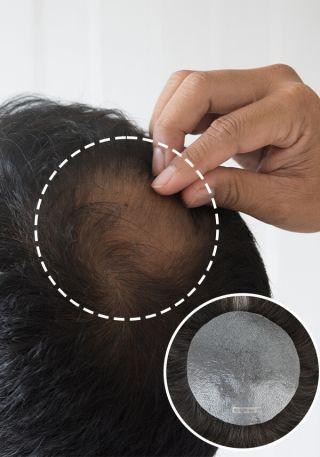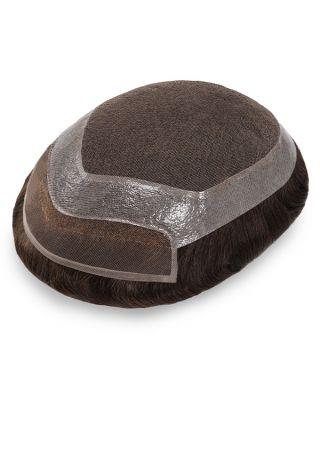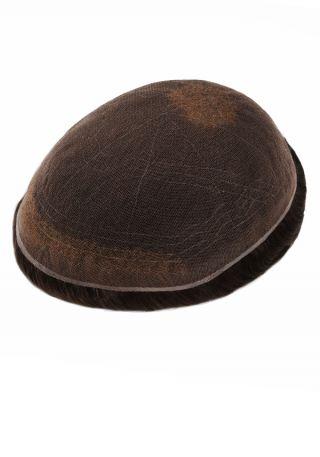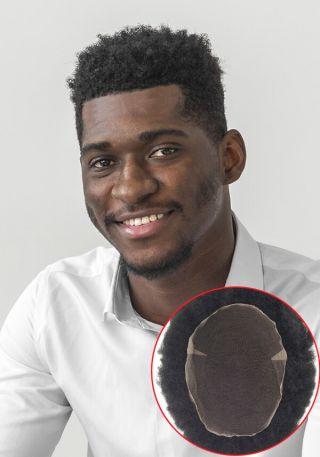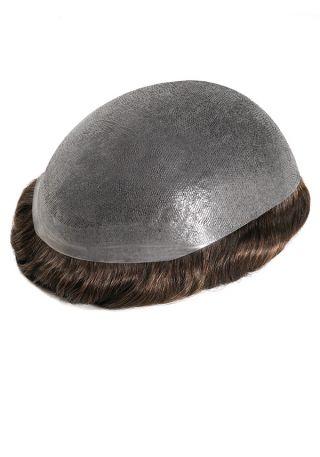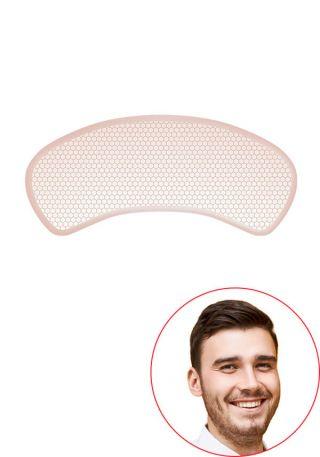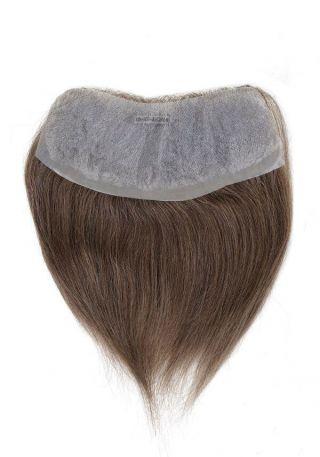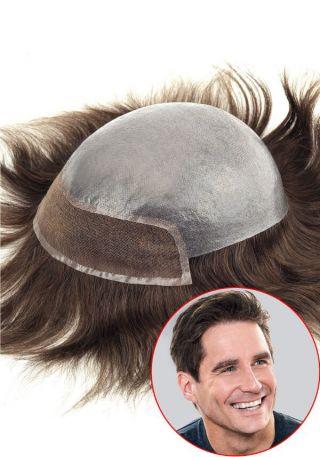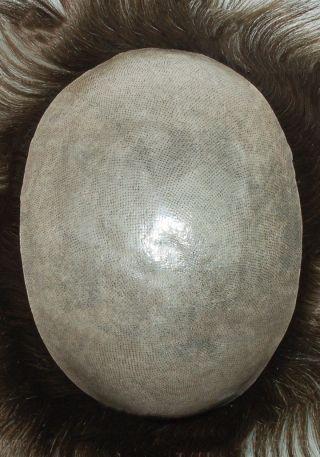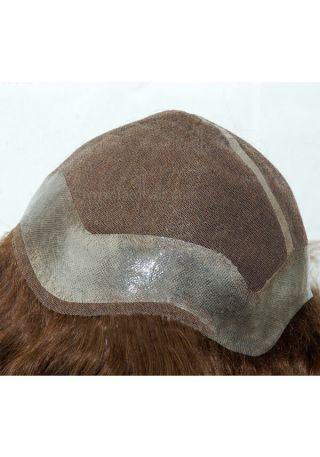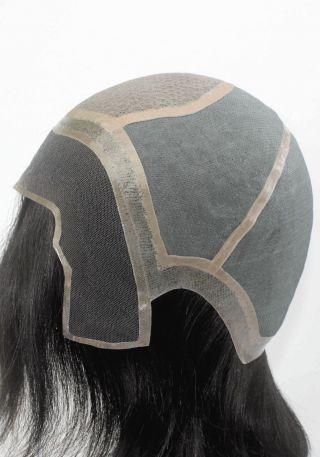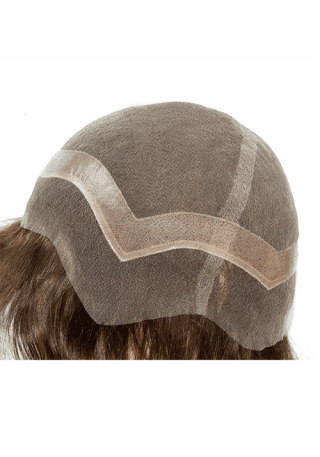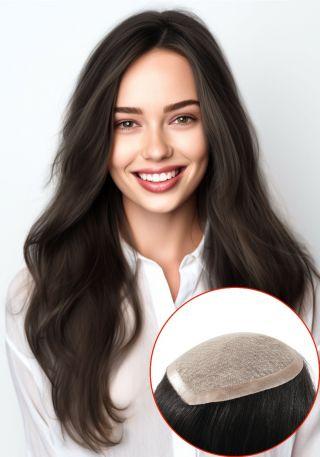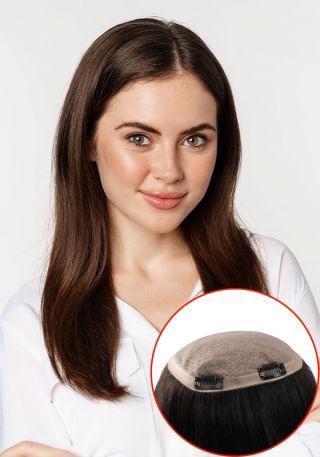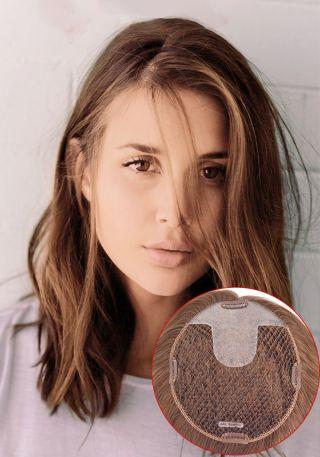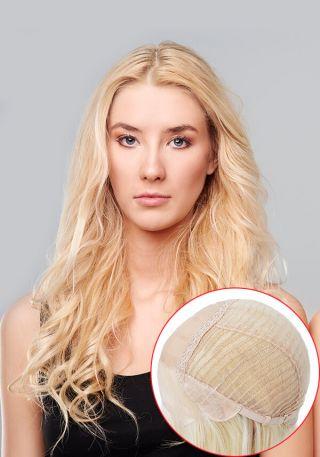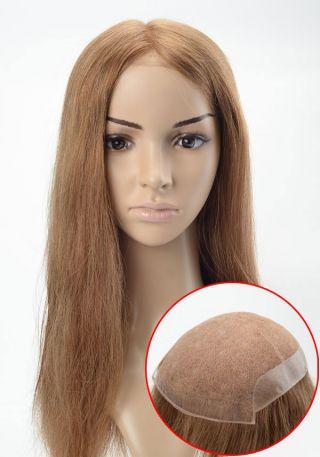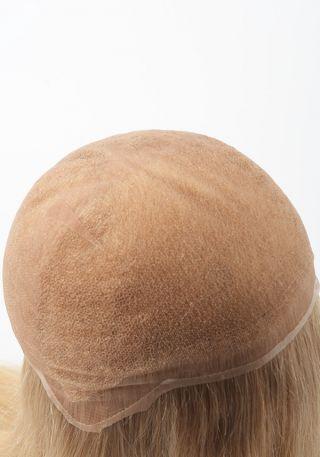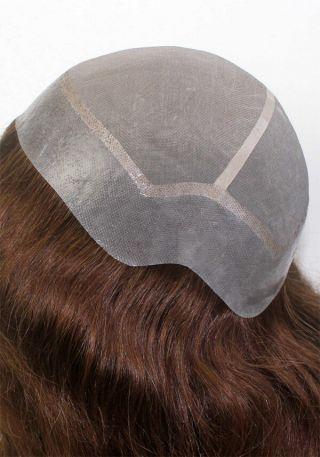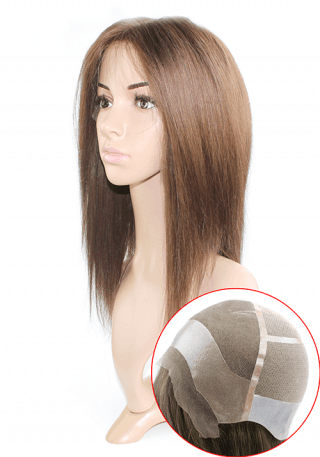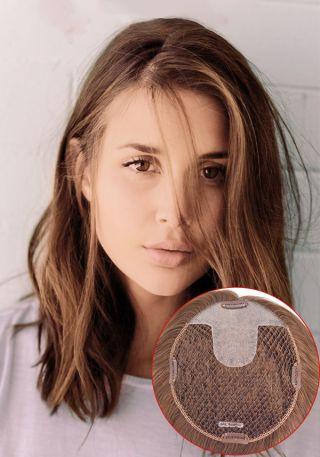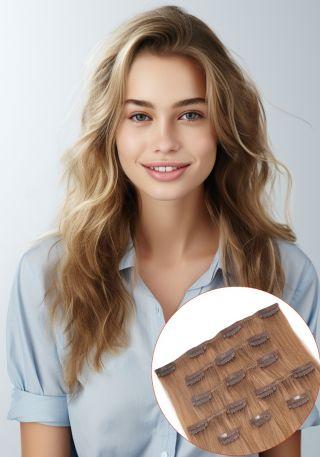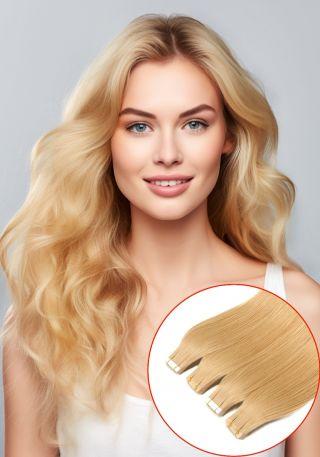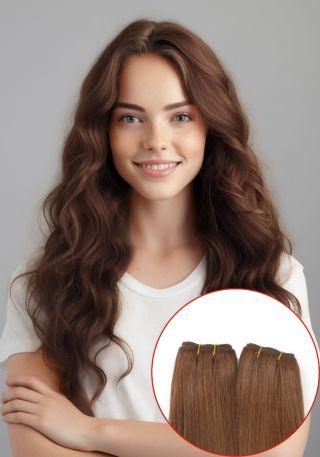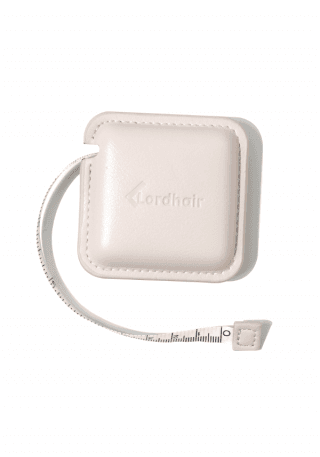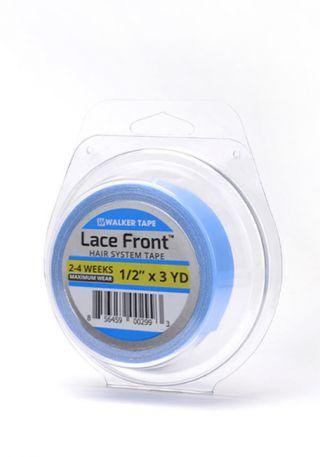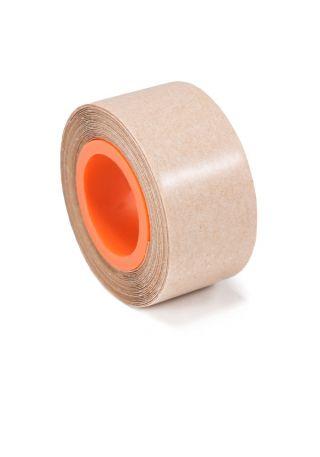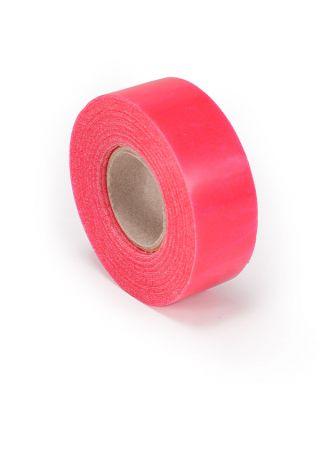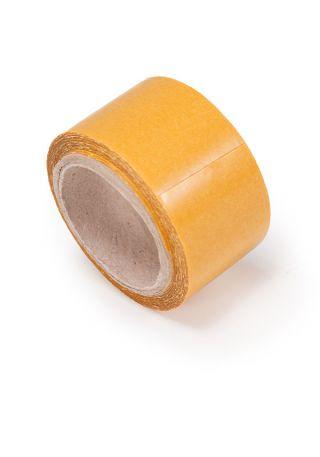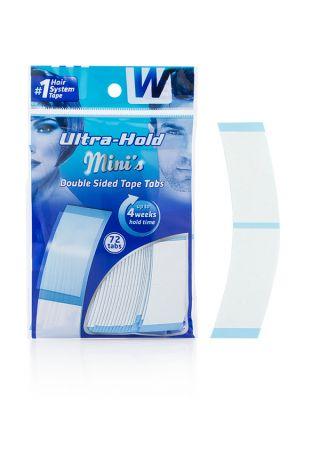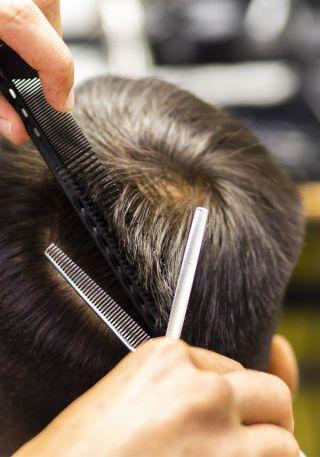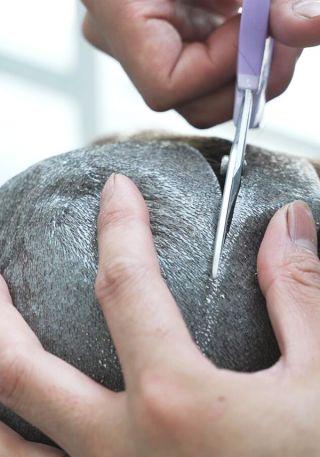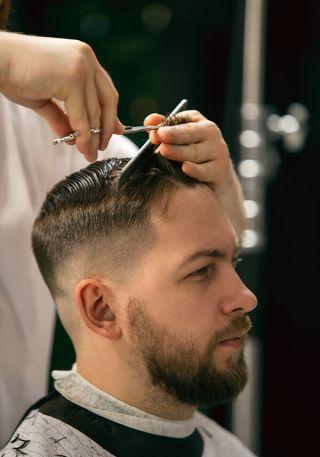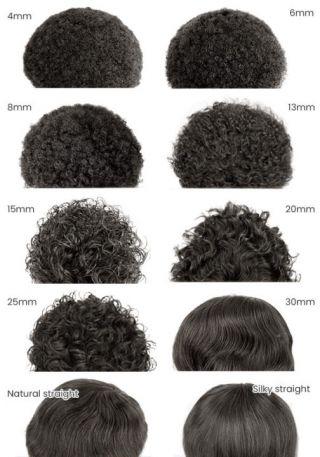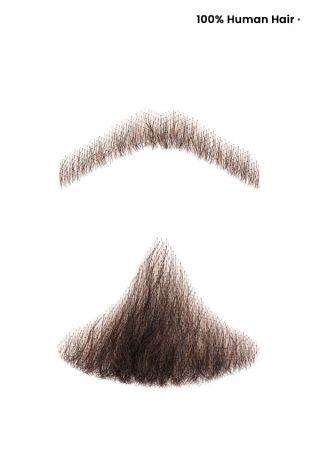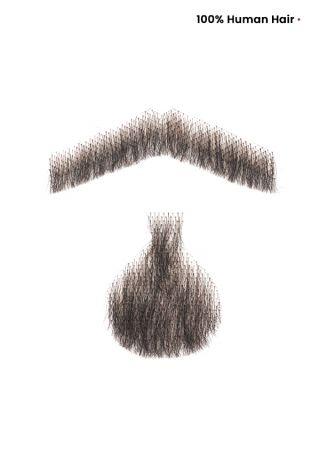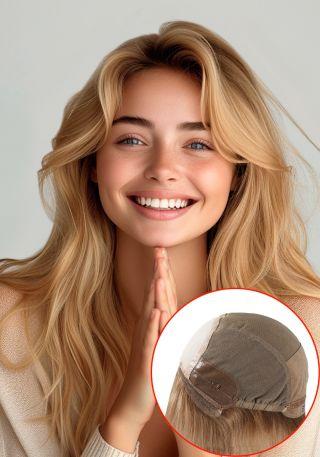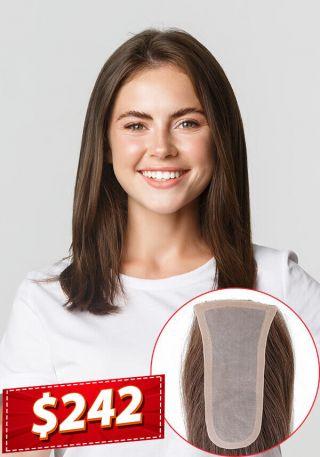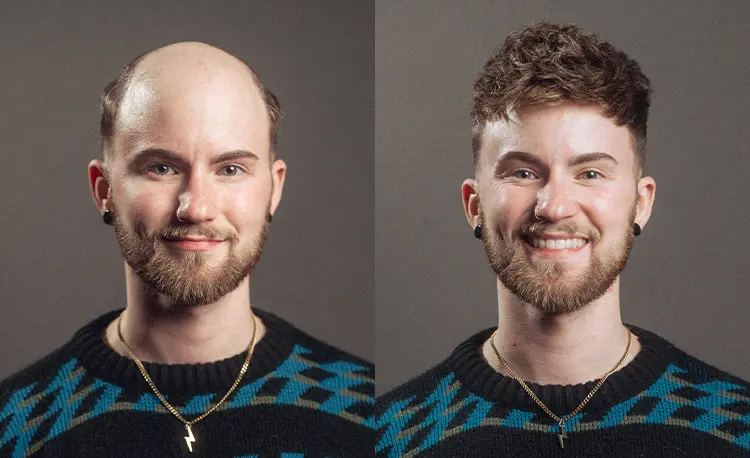Toupees for Baldness: A Good Hair Loss Solution?
- Written by Kobla Kugbega
- Apr 8, 2024
- |
- 11 min read
 Listen to the full text
Listen to the full textIn the pursuit of solutions for hair loss, individuals are confronted with a myriad of options to consider. Among these choices, toupees stand out as a classic yet debated remedy. The use of toupees to address baldness has a long-standing history, evolving alongside changing perceptions and advancements in design and materials.
In this article, we examine the effectiveness, aesthetic considerations, and practical aspects of toupees as a remedy for hair loss, carefully weighing the advantages and potential drawbacks. As we navigate the intricate landscape of personal grooming and self-esteem, our goal is to offer insights to those pondering the use of toupees for baldness, providing guidance on their journey toward regaining confidence and a renewed sense of identity.
The Basics of a Toupee
Male pattern baldness is a common occurrence, affecting over 50% of men by the age of 40. The term "toupee" specifically denotes a hairpiece designed to conceal bald spots when crafted and fitted correctly. While effective in providing convincing coverage for these areas, toupees can be relatively expensive to create and inconvenient for daily wear.
If you seek treatment options for hair loss, a toupee is not the solution. Its purpose is to conceal existing hair loss, not to halt or prevent it. For effective results in addressing hair loss, science-based medications like finasteride or minoxidil are recommended. These medications produce tangible outcomes, unlike toupees, which merely camouflage hair loss.
In cases of noticeable and persistent hair loss, considering hair transplant procedures can be a viable option. These procedures effectively restore hair to areas of the scalp where hair loss has occurred.
The shift in terminology from "toupee" to "hair system" signifies a departure from the stereotypical perception of hairpieces as artificial or obvious. Embracing the term hair system reflects a contemporary understanding of the diverse options available for individuals experiencing hair loss. It emphasizes the transformative nature of these solutions, which not only conceal baldness but also contribute to a more authentic self-image.
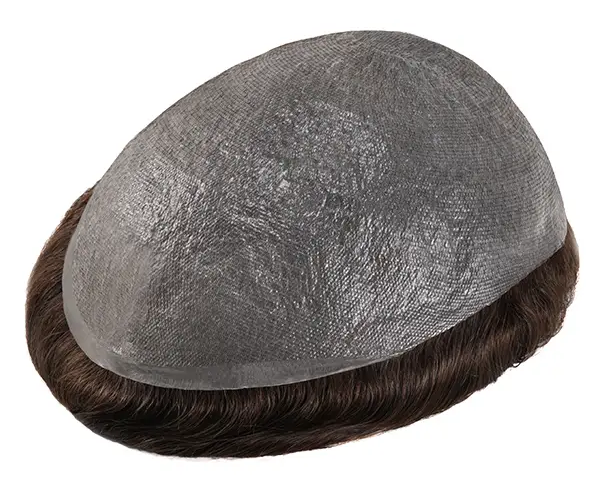
How Long Does a Toupee Last?
The typical lifespan of toupees for baldness falls within the range of one to twelve months, with varying factors influencing its durability:
Toupee Material:
The choice of material significantly impacts the lifespan. Monofilament hair systems tend to last longer compared to lace or skin front systems. While the thicker and more durable monofilament fabric provides longevity, it may result in a less natural appearance compared to thinner lace and skin front materials.
Care and Maintenance:
Diligent care and maintenance practices, such as limiting hair washes to once a week, incorporating deep conditioning, and avoiding vigorous scrubbing, contribute to prolonging the life of the toupee.
Hair Type and Quality:
The durability of the toupee is influenced by the type and quality of the hair used. Since most toupees utilize real human hair, the specific type and quality can impact how long the system retains its optimal condition.
Toupee Styling:
Frequent styling can accelerate the need for replacement. Generally, the more you style the toupee, the sooner it will require refreshing.
Environment:
Environmental factors play a role in the longevity of the hair system. Exposure to chemicals, chlorine, and UV light can contribute to a reduction in its overall lifespan.
When appropriately applied, toupees should securely adhere without the risk of falling off. The key lies in experimenting with various tapes and glues to discover the most reliable and secure fitting for your specific hair system.
It's essential to acknowledge that the adhesive used in securing the hair system is not a permanent fixture. Over time, its effectiveness diminishes, requiring periodic reattachment to ensure a consistently secure fit. Regular maintenance intervals are crucial to sustain the longevity of the adhesive bond and prevent any unintended detachment.
Recognizing signs of the toupee lifting more than usual serves as a key indicator that the adhesive may need replacement. This observation prompts the need for a careful assessment, emphasizing the importance of timely intervention to maintain the system's stability and overall effectiveness. By staying vigilant and responsive to these indications, individuals can proactively address any potential issues related to adhesive wear, ensuring a continuous and secure attachment of their men’s wigs for baldness.
Is a Toupee a Good Solution for Hair Loss?
Toupees come with distinct advantages in addressing hair loss, yet they also carry notable drawbacks.
The positive reasons to consider opting for a toupee to address your hair loss include:
- Instant Results: Witness an immediate transformation in your appearance without the need to wait for hair regrowth.
- Non-Surgical: The installation of a toupee is entirely non-invasive, eliminating concerns about recovery or the management of hair grafts.
- Lower Upfront Costs: Although hair systems may be pricier than treatments like Minoxidil and Finasteride, the initial investment is more economical compared to a hair transplant.
- Versatility for Multiple Hair Loss Types: Whether dealing with alopecia areata, male pattern baldness, or another form of alopecia, a hair system provides effective coverage for diverse types of hair loss.
- Reversible: If you decide to embrace your bald look once again, the process is as simple as removing the hair system and returning to your preferred buzzcut style.
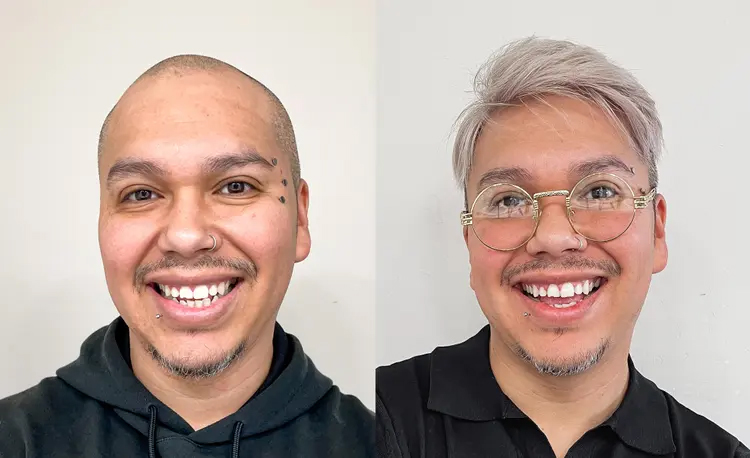
Although hair systems demonstrate effectiveness for numerous men, it is essential to remain aware of potential drawbacks:
- Ongoing Costs: The expenses associated with replacing, fitting, and maintaining hair systems can accumulate significantly over time, often surpassing the costs of surgical hair restoration after a few years.
- Clear Hair Changes: Despite the immediate visibility of results, explaining the sudden emergence of a full head of hair overnight to friends and colleagues can be a necessary yet potentially awkward task.
- No Permanent Regrowth: Hair systems do not address hair loss at its roots; rather, they serve as a concealment. Underneath the wig, a fully bald scalp remains, which may be disheartening for some individuals seeking a more permanent solution.
- Potential for Worsened Hair Loss: The adhesive materials used to attach hair systems to the scalp may exert tension on existing hair follicles, potentially accelerating the rate of hair loss.
- Hassle of Replacement and Fitting: With each new hair system, careful installation is essential to maintain a seamless and natural appearance, adding to the time and effort required for upkeep.
- Toupee Security Concerns: Anxiety regarding the security of toupees is a common concern among users, as inadequate securing may lead to worries about the wig falling off.
Is it Truly Worth getting a Toupee?
Many men find contentment with their chosen toupee, viewing it as an effective means to achieve a full head of hair without the commitment of undergoing surgical procedures. It serves as a viable option for those who seek immediate results and prefer a non-invasive approach to address their hair loss concerns.
However, for a subset of individuals, the ongoing costs and the hassle associated with maintaining and replacing a hair system may outweigh its benefits. For this demographic, investing in a hair transplant emerges as a more attractive option, providing a permanent solution that instils a sense of security and confidence. The ability to pair a hair transplant with medical therapies like Finasteride further enhances the potential for natural and lifelong results.
The decision between a non-surgical hair system and a hair transplant involves careful consideration of both the advantages and drawbacks. While it offers convenience and immediate results, a hair transplant offers a more enduring solution. Ultimately, individuals must assess their priorities and preferences to determine whether the investment in a non-surgical toupee aligns with their long-term goals and desired outcomes.
Alternatives for Treating Hair Loss
A variety of hair balding solutions exist for individuals grappling with hair loss, catering to both men and women. These solutions primarily align with two main categories: medication and surgical procedures. While these approaches aim to address the common concern of hair loss, each category encompasses diverse options, offering individuals non-surgical and surgical choices to consider.
Medication Options
Finasteride - This prescription medication is FDA-approved and comes in pill form, taken once daily. Consistent usage may lead to visible improvements around the four-month mark. It is also an option for women experiencing hair loss, but caution is advised for pregnant women.
Minoxidil - Among the widely recognized over-the-counter hair loss treatments suitable for both men and women, Minoxidil stands out. FDA-approved, it is available in shampoo and liquid foam forms. Application to the scalp can effectively halt the process of hair thinning, and when applied at the scalp's base, it stimulates hair growth.
Nutrafol - This medication takes the form of a natural supplement, formulated with specific ingredients, including medical-grade plant extracts.
Spironolactone - Prescribed to women dealing with pattern hair loss, spironolactone is not recommended for pregnant women due to its potential to cause birth defects.
Surgical Procedures
Hair transplant - In this process, healthy hair follicles are extracted and subsequently transplanted into areas of the scalp that require new hair.
Scalp Flaps - This technique entails relocating sections of the scalp exhibiting healthy hair growth to areas that require additional hair.
Scalp Reduction - This surgical procedure involves the removal of bald scalp portions, followed by repositioning areas with healthy hair growth closer together to minimize balding.
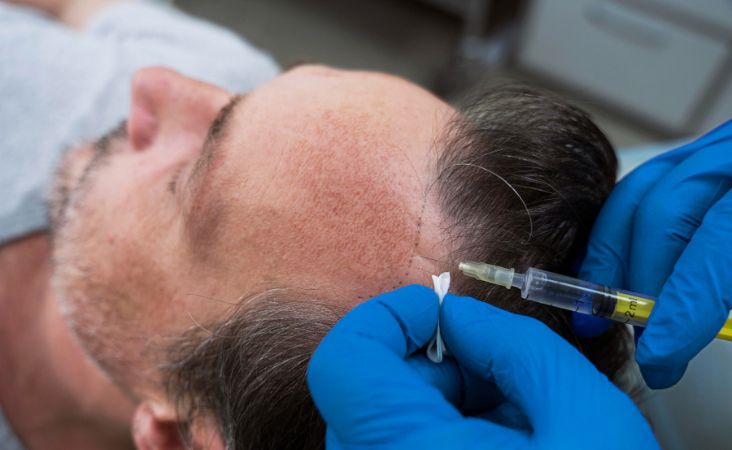
Other Methods
Laser Devices - Portable devices that emit laser lights to stimulate hair growth are available in various forms such as combs, hats, and brushes. FDA-approved, these laser-emitting devices are classified as medical devices.
PRP for Hair Loss - This procedure entails injecting the patient's blood platelets to enhance the potential for hair growth in individuals experiencing hair loss.
Conclusion - Are Toupees a Good Hair Solution?
The question of whether a toupee serves as one of the best hair solutions for baldness is subjective and contingent on individual preferences, lifestyle, and expectations. While toupees offer a quick and non-surgical way to achieve a full head of hair, there are associated considerations such as ongoing costs, maintenance, and potential limitations. For those seeking a more enduring and permanent solution, alternatives like hair transplants coupled with medical therapies may be worth exploring.
Ultimately, the efficacy of a toupee for managing baldness depends on the balance between its advantages and potential drawbacks. Individuals are encouraged to weigh their priorities, consider the long-term commitment, and explore various options before making a decision that aligns with their unique needs and goals. Whether opting for a toupee or exploring alternative treatments, the key is to make an informed choice that enhances confidence and meets personal expectations in addressing the challenges of hair loss.
Modern hair systems provide instant and impressive results for men, effortlessly enhancing the bald look! Choosing a hairpiece from trusted brands like Lordhair ensures both hyper-realistic aesthetics and comfort at an affordable price.
Lordhair specializes in designing and delivering custom hair replacement systems to over 100 countries. Our products, crafted with 100% human hair, come with a 30-day money-back guarantee. Explore our men's hair system catalog to discover our quality and craftsmanship.
Questions? Email us at support@lordhair.com for expert answers!



